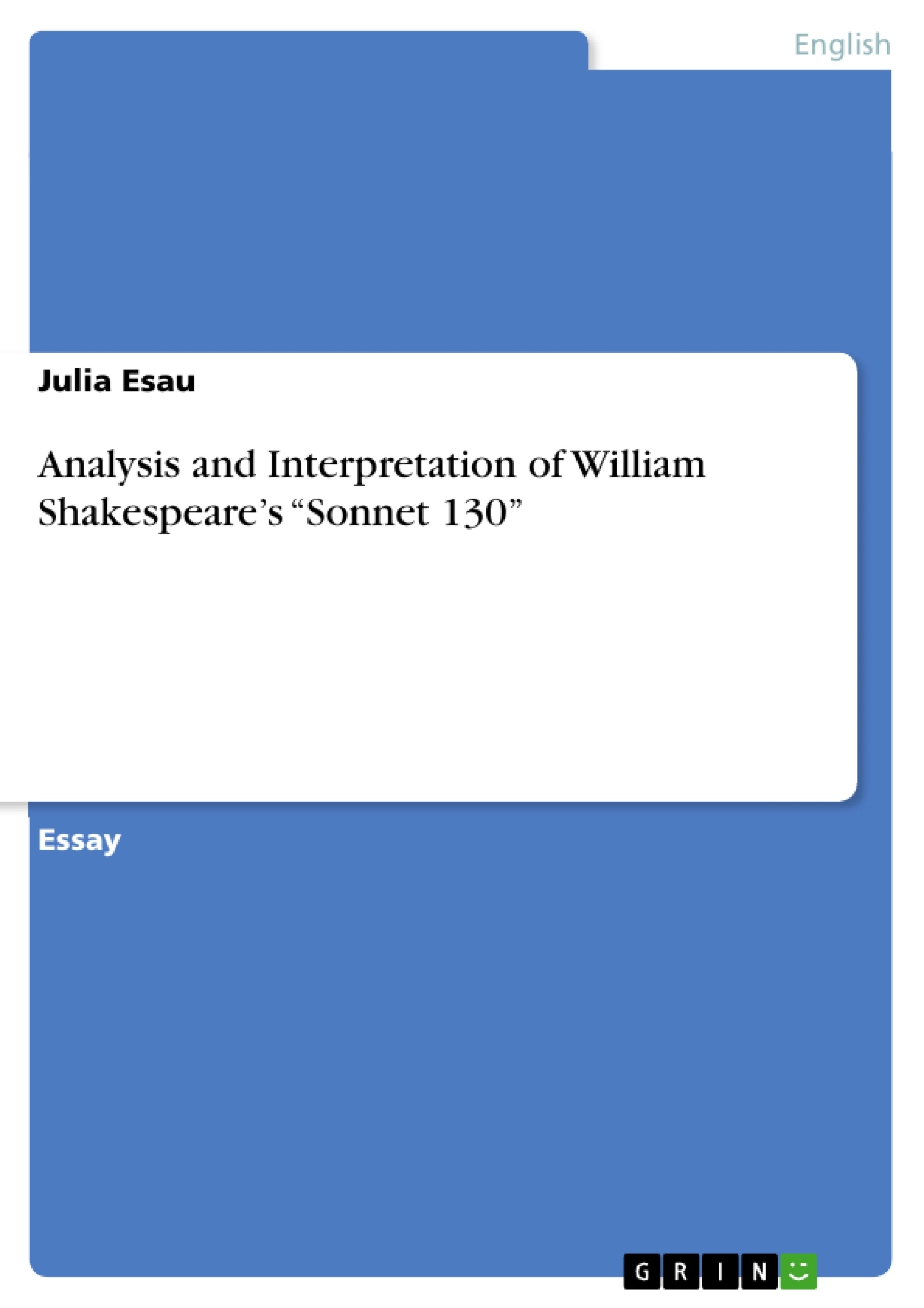In William Shakespeare’s (1564 – 1616) “Sonnet 130”, published 1609 in his book “Shakespeare’s Sonnets”, the speaker talks about his mistress who does not correspond with the ideals of beauty. The speaker compares her with beautiful things, but he cannot find a similarity. But he points out that his love does not depend on how she looks like. This poem is the total opposite of William Shakespeare’s “Sonnet 18” and makes it, and other poems from this century, look ridiculously and superficially.
Table of Contents
- Introduction
- Analysis of "Sonnet 130"
- The Mistress
- The First Quatrain
- The Second Quatrain
- The Third Quatrain
- The Final Couplet
- Conclusion
Objectives and Key Themes
This analysis of William Shakespeare's "Sonnet 130" aims to examine the poem's unconventional portrayal of love and beauty. It delves into the speaker's perspective, exploring his love for a mistress who does not conform to traditional beauty standards.
- Unconventional Beauty
- The Role of Appearance in Love
- Social Expectations of Women
- Shakespeare's Critique of Traditional Love Poetry
- The Importance of Inner Qualities
Chapter Summaries
The analysis begins by introducing the speaker's mistress, highlighting her unconventional appearance and the speaker's unconventional love for her. The analysis then examines each quatrain of the sonnet, exploring the speaker's use of comparisons and his critiques of societal beauty standards.
The first quatrain focuses on the mistress' physical appearance, emphasizing her lack of traditional beauty. The second quatrain continues this theme, highlighting the speaker's unconventional perception of his mistress. The third quatrain explores the speaker's appreciation for the mistress' voice, contrasting it with conventional expectations of women's musical abilities.
Keywords
This analysis of "Sonnet 130" focuses on themes of unconventional beauty, the role of appearance in love, societal expectations of women, Shakespeare's critique of traditional love poetry, and the importance of inner qualities.
- Quote paper
- Julia Esau (Author), 2010, Analysis and Interpretation of William Shakespeare’s “Sonnet 130”, Munich, GRIN Verlag, https://www.hausarbeiten.de/document/194065



